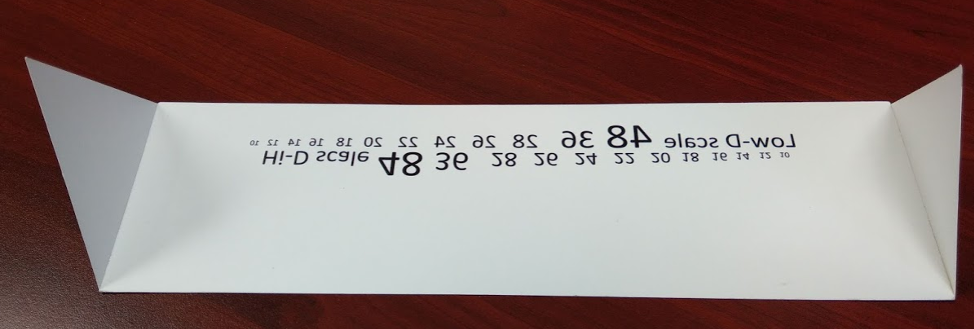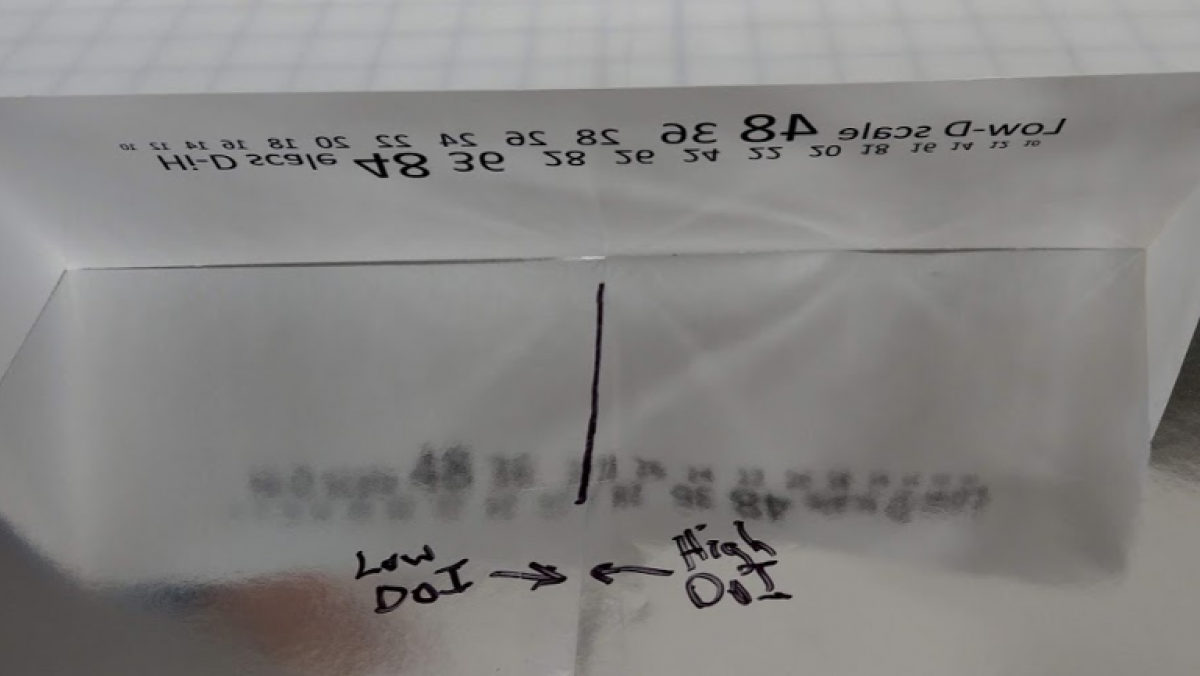Distinctness of image on metallized paper
One of the reasons people love papers from Nissha Metallizing Solutions is the bright, glossy, silver appearance that can be obtained. Whether it’s printed or tinted with colors or left ‘silver’, the quality of the aluminum surface is always noticed.
Just as the Inuit people have dozens of words to describe snow, in the metallizing field we have multiple ways to measure and describe the surface quality. Objective measures like gloss and smoothness, which are measured by instruments, are important but don’t give the whole picture.
We have developed a useful tool called Distinctness of Image, or DoI for short. Based on earlier work by others in the industry, we modified and simplified into the current DoI test - it's pictured below.
The test uses a home-made scale of numbers, each printed backwards at the nominal font size: the number 48, for example, is twice the physical dimension of the number 24.

The observer places the number scale tool against the metallized surface and decides which number reflected by the paper is the smallest which is still distinct or ‘not blurry’. The test is still subjective since human eyesight and judgment are required to decide the point where numbers are no longer distinct. In fact we have an upper row for more distinct papers and a lower row for papers with a bright but more diffuse surface. We have found close agreement between different people, so the test is not too subjective.
Following are photos of the tool in use.

Roghi Kalan, Ph.D. of our R&D team in Franklin, MA, is using the Dol tool.

Close-up photo, a low DoI paper is on the left and a high DoI paper is on the right. See how the 24 is about as clear on the right side paper as the large 48 is on the left (although it’s much easier to see with your own eyes than in the photo)!